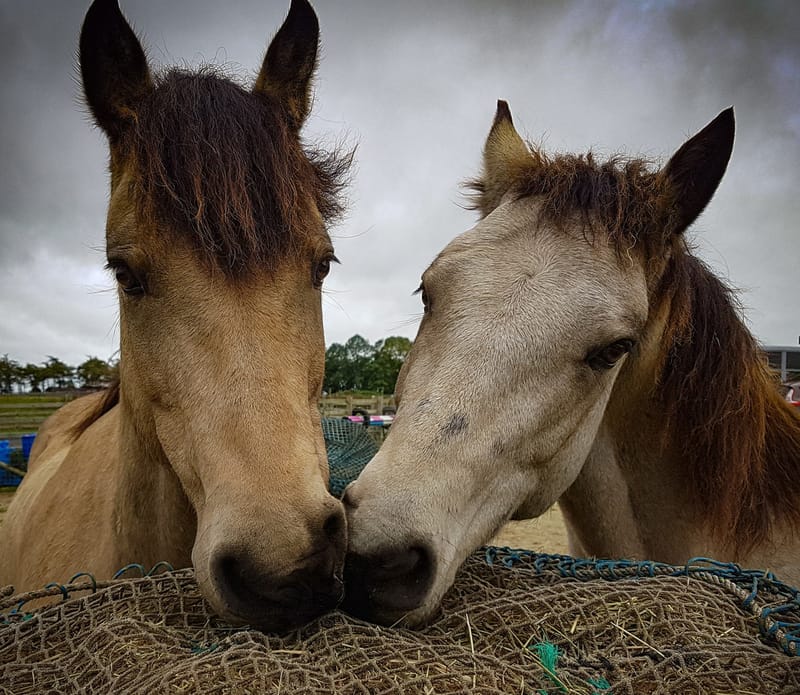How We Hay

All year round, our horses are fed ad lib hay that is low in sugar and low in starch (ESC -10%) to mimic the closest we can get to what horses have evolved to eat in the wild (long, brown, low sugar grass, little and often).
Our hay is always organic, which means it is not sprayed with chemicals, and is made up of a mixture of meadow grasses. We get our hay tested every year to ensure it is below 10% sugar and starch combined.
However, we DO NOT FEED THE MAJORITY OF HAY LOOSE. We believe feeding hay loose on the ground or in feeders is unnatural and also contributes to horses being over-weight and not moving enough. The grass that wild horses would have eaten would not have been as easy to eat as loose hay – they would have to forage and work hard to bite, pull and tease it out of the ground using their teeth and lips. We do occasionally spread very small piles of loose hay around the track to encourage movement.
We place the majority of our haynets in hay boxes to mimic how horses would spend most of their time eating – heads down!
Horses would also naturally browse from hedges and trees, so around 20% of our haynets are tied up high to mimic this.
We use a variety of different sized holed haynets. We have haynets from 25mm up to 40mm which are spread out around the track and corrals. Some are double netted, and some are single netted, but this changes depending on how easy to eat a particular bale is.
The hole size we use depends a lot on what hay we have in at the time- hay that is finely cut is harder to get out, whereas hay that is cut in long strands is much easier to get out of a net. All our hay comes from the same place, but still varies in length etc. depending on what part of the 300 acre farm it came from.
It is also important that the hay is spread out to encourage movement.
We use double netted round bales aswell as haynets, that are situated at the front of the tracks. Previously we tried bales on their own, but found that without the addition of haynets, the horses would ‘park’ at the bales and only move when they wanted a drink. With fresh haynets of different sizes spread out around the track the horses are always on the move from one to the other – much harder work for me, but much better for the horses!
The one or two bales that we do put out are for ‘back up’ for when the nets are running low, but these are double netted, to prevent ‘parking’.
Occasionally we spread out very small piles of loose hay, such as when they ignore a particular haynet for a few days or one gets very wet.
Our haynets are made by Nibbleaze and are designed to be soft and kind on lips and teeth. We also use the soft mesh haynets from Shires, although they are a little harder to eat from, which helps as it provides variety.
Check out photos of our horses enjoying their hay in our gallery.


